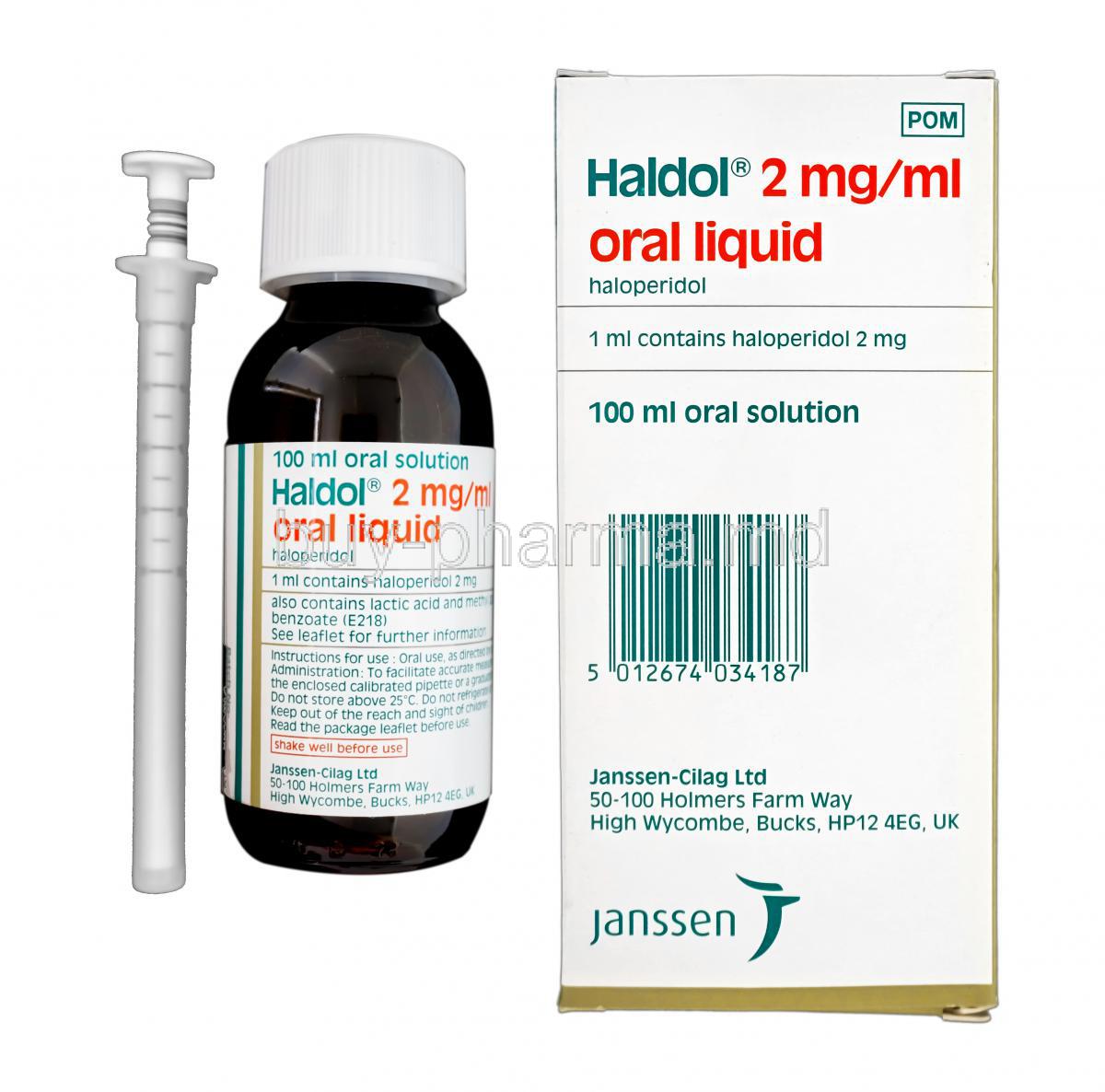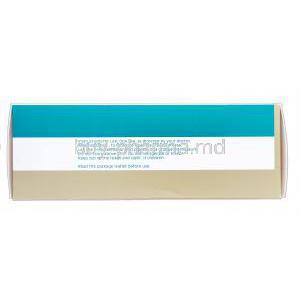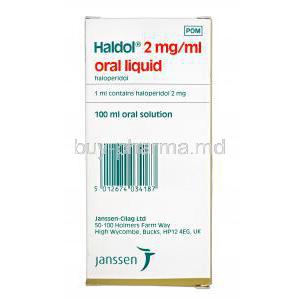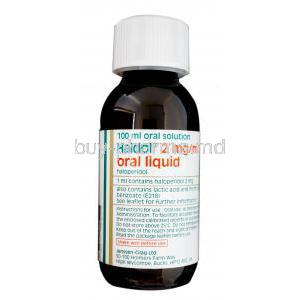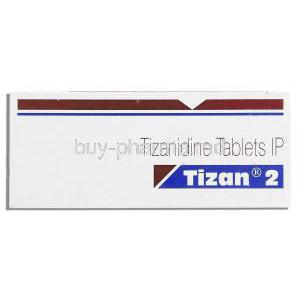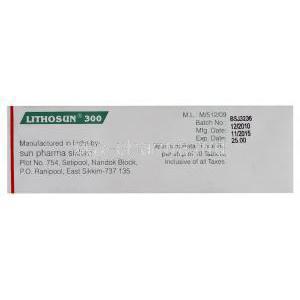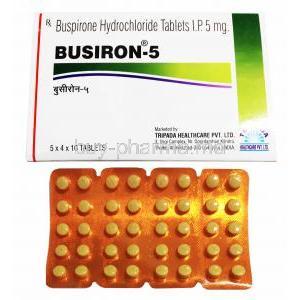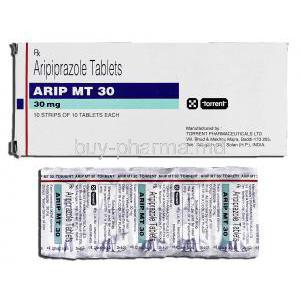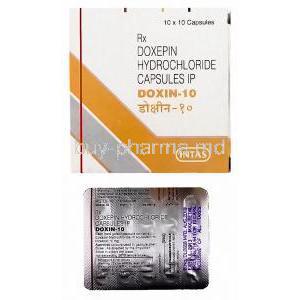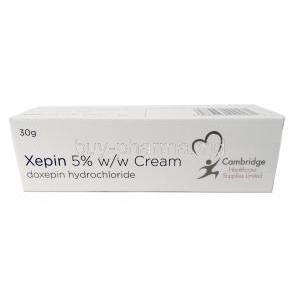1. Introduction to Haldol Oral Solution
Overview of Haldol: Brand Name and Active Ingredient (Haloperidol)
Haldol is the brand name for haloperidol, a potent antipsychotic medication used to manage a range of severe psychiatric and neurological conditions. As a first-generation antipsychotic, haloperidol has a long-standing clinical history and is recognized globally for its effectiveness in managing psychotic disorders.
Therapeutic Classification: First-Generation Antipsychotic (Butyrophenone Class)
Haloperidol belongs to the butyrophenone class of antipsychotics. It acts primarily as a dopamine receptor antagonist, producing strong antipsychotic effects with a high potential for extrapyramidal side effects.
Oral Solution Formulation: Indications for Liquid Dosage Form
Haldol Oral Solution is particularly advantageous for patients with dysphagia, poor compliance with tablets, or pediatric and geriatric patients who require flexible dosing. It allows precise titration and ease of administration via oral syringe or dropper.
Regulatory Approval and Prescription Status
Haldol is an FDA-approved prescription medication. Its use is regulated due to its potency, narrow therapeutic index, and risk of severe adverse effects in certain populations.
2. Comprehensive Medical Uses of Haldol Oral Solution
2.1 FDA-Approved Uses
- Schizophrenia: Management of positive and negative symptoms in chronic or acute psychotic states.
- Acute Psychosis and Agitation: Rapid control of severe behavioral disturbances in emergency settings.
- Tourette’s Disorder: Suppression of tics and involuntary vocalizations.
- Behavioral Problems in Children: For severe hyperactivity, impulsivity, or aggression unresponsive to other interventions.
2.2 Off-Label and Investigational Uses
- Delirium: Symptom control in ICU and medically unstable patients.
- Severe Nausea and Vomiting: Especially in chemotherapy-induced or postoperative cases.
- Agitation in Dementia: With caution due to black box warning risks.
- Huntington’s Disease: Chorea suppression and behavioral control.
- Bipolar Disorder: Acute mania stabilization in treatment-resistant cases.
- Autism Spectrum Disorder: Management of aggressive and self-injurious behaviors.
3. How Haldol Oral Solution Works: Mechanism of Action
- Dopamine D2 Antagonism: Blocks dopamine receptors primarily in the mesolimbic pathway, reducing hallucinations and delusions.
- Pathway Effects: Modulates activity in mesocortical and nigrostriatal tracts.
- Extrapyramidal Impact: High affinity for D2 receptors in basal ganglia may lead to motor side effects.
- Onset and Duration: Oral solution begins acting within 30 to 60 minutes, with effects lasting up to 24 hours.
4. Dosage and Administration Guidelines
4.1 Standard Adult Dosage
- Initial Dose: 0.5 to 5 mg two to three times daily.
- Maintenance: Typically 10–15 mg/day, with max doses individualized per response.
4.2 Pediatric Dosage Considerations
- Children (3-12 years): 0.05–0.15 mg/kg/day divided into two or three doses.
- Start low, titrate cautiously: Close behavioral monitoring required.
4.3 Geriatric Dosing Adjustments
- Start at 0.5–1 mg/day: Increase slowly while monitoring for sedation or extrapyramidal effects.
4.4 Special Considerations in Hepatic and Renal Impairment
- Hepatic Impairment: Use with caution, as haloperidol is hepatically metabolized.
- Renal Impairment: Minimal excretion via kidneys but monitor for CNS accumulation in chronic renal failure.
5. Composition and Formulation Details
- Active Ingredient: Haloperidol 2 mg/mL.
- Inactive Components: Citric acid, lactic acid, methylparaben, alcohol, purified water.
- Sugar and Alcohol Content: Alcohol content approximately 5%, sugar-free formulation available in some variants.
- Packaging: Usually supplied in 15 mL, 30 mL, or 100 mL dropper bottles with calibrated dosing devices.
6. Potential Side Effects of Haldol Oral Solution
6.1 Common Side Effects
- Drowsiness and sedation
- Restlessness and akathisia
- Insomnia or vivid dreams
- Nausea, constipation, dry mouth
- Mild tremors and rigidity
6.2 Serious and Rare Adverse Effects
- Tardive Dyskinesia: Irreversible movement disorder after long-term use
- Neuroleptic Malignant Syndrome (NMS): Life-threatening; presents with hyperthermia, rigidity, and autonomic instability
- QT Prolongation: Risk of torsades de pointes and sudden cardiac arrest
- Seizures: Especially in patients with predisposing conditions
7. Drug Interactions and Contraindicated Combinations
7.1 Medications That Increase Side Effect Risks
- Alcohol, benzodiazepines, opioids: Enhanced sedation and respiratory depression
- Anticholinergic agents: Increased cognitive impairment and heat intolerance
- Beta-blockers: Risk of bradycardia and hypotension
7.2 Enzyme Inhibitors and Inducers Affecting Haloperidol
- Inhibitors: Fluoxetine, paroxetine, ketoconazole may increase haloperidol levels
- Inducers: Carbamazepine, rifampin reduce therapeutic efficacy
7.3 Contraindicated Drug Interactions
- Class IA and III antiarrhythmics (e.g., amiodarone, quinidine)
- MAO inhibitors: Risk of hypertensive crisis or serotonin toxicity
- Levodopa and other dopaminergic agents: Antagonistic pharmacodynamic effects
8. Warnings and Black Box Precautions
- Elderly with Dementia: Increased mortality risk from cardiovascular and infectious causes
- Pregnancy Exposure: Risk of EPS and withdrawal symptoms in neonates
- Sudden Death: Associated with QT prolongation and cardiac arrhythmias
- Seizure Threshold: Use with caution in epileptic patients
9. Contraindications for Haldol Oral Solution Use
- Known hypersensitivity to haloperidol or excipients
- Parkinson’s disease: May exacerbate symptoms
- Comatose patients or those with severe CNS depression
- Patients with a history of long QT syndrome or ventricular arrhythmias
10. Guidelines for Careful Administration and Monitoring
Administering Haldol Oral Solution requires meticulous monitoring due to its potent pharmacological profile. Special attention should be paid to neuromotor, cardiovascular, and behavioral parameters throughout therapy.
- Monitoring for Movement Disorders: Regular assessments for extrapyramidal symptoms (EPS) such as tremors, rigidity, dystonia, and akathisia are essential. Tardive dyskinesia may emerge with prolonged use and requires prompt intervention.
- Routine ECG and Electrolyte Monitoring: Baseline and periodic electrocardiograms (ECGs) are recommended to detect QT prolongation or arrhythmias. Serum potassium and magnesium should be checked, especially in patients at cardiac risk.
- Behavioral Observation in Pediatric Use: In children, careful surveillance for mood swings, hyperactivity, or sedation is warranted. Behavioral baselines should be documented prior to initiation.
- Assessment of Sedation and Respiratory Status: Respiratory rate and mental alertness must be monitored regularly, particularly in elderly or comorbid patients receiving CNS depressants concurrently.
11. Important Precautions Before and During Treatment
Initiating haloperidol therapy necessitates a comprehensive risk-benefit analysis, with emphasis on cardiovascular, neurological, and metabolic safety.
- Screening for Cardiovascular Risk: Patients with a history of arrhythmias, heart failure, or those on QT-prolonging agents should undergo thorough cardiovascular evaluation prior to treatment.
- Avoidance of Abrupt Discontinuation: Haloperidol should be tapered gradually to avoid withdrawal symptoms such as insomnia, anxiety, nausea, and rebound psychosis.
- Avoiding Alcohol and CNS Depressants: Co-ingestion increases the risk of profound sedation, hypotension, and respiratory depression.
- Fall Risk in Elderly Patients: Sedation, orthostatic hypotension, and motor side effects heighten fall susceptibility. Fall prevention strategies must be implemented proactively.
12. Use in Special Populations
12.1 Administration to Elderly Patients
Elderly individuals are particularly vulnerable to the adverse effects of Haldol. Reduced physiological reserves and comorbidities necessitate judicious dosing and heightened monitoring.
- Increased Sensitivity to Extrapyramidal and Sedative Effects: Initiate treatment at the lowest effective dose, monitoring for stiffness, tremor, or excessive drowsiness.
- Monitoring for Orthostatic Hypotension: Postural blood pressure checks should be routine, particularly during dose adjustments or concomitant antihypertensive therapy.
- Use in Dementia: Haloperidol is not recommended for behavioral symptoms of dementia due to increased mortality risk from cardiovascular and infectious causes.
12.2 Use in Pregnant Women and Nursing Mothers
Haldol should only be used during pregnancy or lactation when the expected benefits clearly outweigh the risks. Reproductive safety data require careful interpretation.
- Risk Category and Fetal Harm Potential: Classified as pregnancy category C. Animal studies show adverse fetal effects; human data are limited.
- Neonatal Withdrawal Syndrome: Infants exposed in utero may exhibit extrapyramidal or withdrawal symptoms including tremor, irritability, or feeding difficulty.
- Breastmilk Excretion and Infant Exposure: Haloperidol is excreted in human milk. Caution is advised, and infants should be monitored for sedation or developmental delays.
12.3 Use in Pediatric Patients
Pediatric administration should follow stringent guidelines and be restricted to clearly indicated conditions under specialist supervision.
- Approved Ages and Indications: Typically approved for use in children over the age of 3 for severe behavioral problems and Tourette’s disorder.
- Risk of Sedation, Dystonia, and Behavioral Changes: Watch for signs of excessive drowsiness, muscle spasms, or paradoxical agitation.
- Monitoring for Growth and Development: Long-term use necessitates routine checks for growth velocity and neurocognitive milestones.
13. Overdose and Emergency Management
Haldol overdose can be life-threatening and demands immediate medical attention with supportive and symptomatic care.
- Signs and Symptoms of Overdose: Include severe EPS, hypotension, respiratory depression, coma, and cardiac dysrhythmias.
- Cardiac Monitoring and Airway Management: Continuous ECG monitoring and maintenance of a patent airway are crucial. Intubation may be required in cases of respiratory failure.
- Use of Activated Charcoal and Supportive Care: Activated charcoal is effective if administered promptly. Gastric lavage may be considered if ingestion was recent.
- No Specific Antidote Available: Treatment remains supportive, with emphasis on controlling arrhythmias and preventing complications.
14. Proper Storage and Handling Precautions
Maintaining the stability and safety of Haldol Oral Solution involves strict adherence to storage and handling protocols.
- Recommended Storage Temperature and Light Protection: Store at 15°C to 30°C (59°F to 86°F). Protect from direct light and excessive heat.
- Shelf-Life and Re-Cap Procedures: Check the expiration date regularly. Always secure the cap tightly to prevent contamination or evaporation.
- Keep Out of Reach of Children: Store in a locked medicine cabinet or other childproof location.
- Disposal of Expired or Unused Medication: Follow local regulations for pharmaceutical waste or return to a designated take-back program.
15. Handling and Dispensing Precautions for Caregivers
Caregivers play a vital role in ensuring accurate and safe administration of Haldol Oral Solution. Proper technique and hygiene are paramount.
- Use of Oral Syringe or Dropper for Accurate Dosing: Utilize calibrated devices to avoid dosage errors. Do not estimate doses visually.
- Avoiding Contamination and Maintaining Hygiene: Clean dosing devices thoroughly after each use. Do not allow contact between the dropper and any surface.
- Instructions for Caregivers of Pediatric or Elderly Patients: Monitor closely for side effects, ensure adherence, and maintain open communication with healthcare providers.
- Clear Labeling and Measurement Guidance: Keep medication clearly labeled, and educate caregivers on interpreting dosage instructions and using the proper measuring tools.
Haldol Oral Solution FAQ
- Can Haldol be given orally?
- What is haloperidol oral solution used for?
- Can Haldol be given by mouth?
- How quickly does oral HALDOL work?
- What is haldol used for?
- Is haloperidol a pain killer?
- Who can we not give Haldol to?
- What are the benefits of Haldol?
- Does Haldol calm you?
- What is the best route for Haldol?
- What is the use of haloperidol oral solution?
- When to give Haldol?
- What happens if you overdose on Haldol?
- Does Haldol make you sleepy?
- What happens if you suddenly stop taking haloperidol?
- What are the major side effects of haloperidol?
- What are the dangers of Haldol in the elderly?
- Is Haldol safe?
- How long does oral Haldol last?
- When to take Haldol?
- Can Haldol be given orally?
- What is haloperidol oral solution used for?
- Can Haldol be given by mouth?
- How quickly does oral HALDOL work?
- What is haldol used for?
- Is haloperidol a pain killer?
- What are the benefits of Haldol?
- Does Haldol calm you?
- What is the best route for Haldol?
- When to give Haldol?
- What happens if you overdose on Haldol?
- Does Haldol make you sleepy?
- What happens if you suddenly stop taking haloperidol?
- Does haloperidol affect the heart?
- What are the dangers of Haldol in the elderly?
- Is Haldol safe?
Can Haldol be given orally?
Yes
What is haloperidol oral solution used for?
Haloperidol is prescribed for conditions affecting emotions and mental health, like schizophrenia.
Can Haldol be given by mouth?
Yes
How quickly does oral HALDOL work?
Haloperidol pills and liquid typically start to take effect within 1 to 2 hours.
What is haldol used for?
Haloperidol injection solution is used in adults for managing sudden restlessness linked to psychotic conditions or manic episodes of bipolar I disorder when oral treatment is not suitable.
Is haloperidol a pain killer?
No
Who can we not give Haldol to?
If you have ever experienced a response to haloperidol or any other medication issues, with heart rhythm (arrhythmia), a heart ailment known as long QT syndrome, significant heart failure, suffered from a heart attack within the past 2 months, or have been diagnosed with Parkinson's disease.
What are the benefits of Haldol?
Haloperidol functions as a medication by inhibiting nerve activities in the brain, which aids in alleviating anxiety and addressing various mental health symptoms effectively.
Does Haldol calm you?
Yes
What is the best route for Haldol?
Oral
What is the use of haloperidol oral solution?
Haloperidol is commonly prescribed to manage symptoms of schizophrenia as a medication that functions by inhibiting dopamine activity in the brain, a neurotransmitter influencing cognition and emotions.
When to give Haldol?
Using Haldol could be considered suitable for addressing delirium in hospice patients.
What happens if you overdose on Haldol?
There has been an increase in blood pressure, and feelings of drowsiness or sedation have been noted, as well as instances of coma occurring alongside respiratory depression and severe hypotension in more severe cases. In occurrences of nature ventricular arrhythmias have been reported to happen regardless of the presence of prolonged QT time.
Does Haldol make you sleepy?
Yes
What happens if you suddenly stop taking haloperidol?
The latest discoveries suggest that withdrawing from haloperidol involves a component that induces anxiety.
What are the major side effects of haloperidol?
- Dizziness
- Hypoglycemia
- Constipation
- Dry Mouth
- Blurred Vision
- Drowsiness
What are the dangers of Haldol in the elderly?
Elderly patients might experience tachycardia and low blood pressure often.
Is Haldol safe?
Yes
How long does oral Haldol last?
Between 14 and 37 hours
When to take Haldol?
2-3 times a day
Can Haldol be given orally?
Yes
What is haloperidol oral solution used for?
Haloperidol is prescribed for managing conditions related to nerves and emotions such as schizophrenia.
Can Haldol be given by mouth?
Yes
How quickly does oral HALDOL work?
Haloperidol pills and liquid typically start to take effect in 1 to 2 hours.
What is haldol used for?
Haloperidol injection solution is used for managing acute restlessness linked to mental illness or manic episodes in adults, with bipolar disorder type I if oral treatment is not suitable.
Is haloperidol a pain killer?
No
What are the benefits of Haldol?
Haloperidol functions by inhibiting nerve activity in the brain, which can alleviate anxiety and other mental health symptoms by blocking activity in the brain region responsible for nausea and vomiting sensations.
Does Haldol calm you?
Yes
What is the best route for Haldol?
Oral
When to give Haldol?
Utilizing Haldol could be considered suitable for addressing delirium in hospice patients.
What happens if you overdose on Haldol?
There is an increase in blood pressure, and drowsiness or sedation may occur. In situations, coma could happen along with issues and severe low blood pressure. In instances, serious heart rhythm irregularities could arise, whether there is a QT interval or not.
Does Haldol make you sleepy?
Yes
What happens if you suddenly stop taking haloperidol?
The latest discoveries suggest that withdrawal from haloperidol involves an element that triggers anxiety.
Does haloperidol affect the heart?
No
What are the dangers of Haldol in the elderly?
Elderly patients may experience tachycardia and hypotension often.
Is Haldol safe?
Yes

